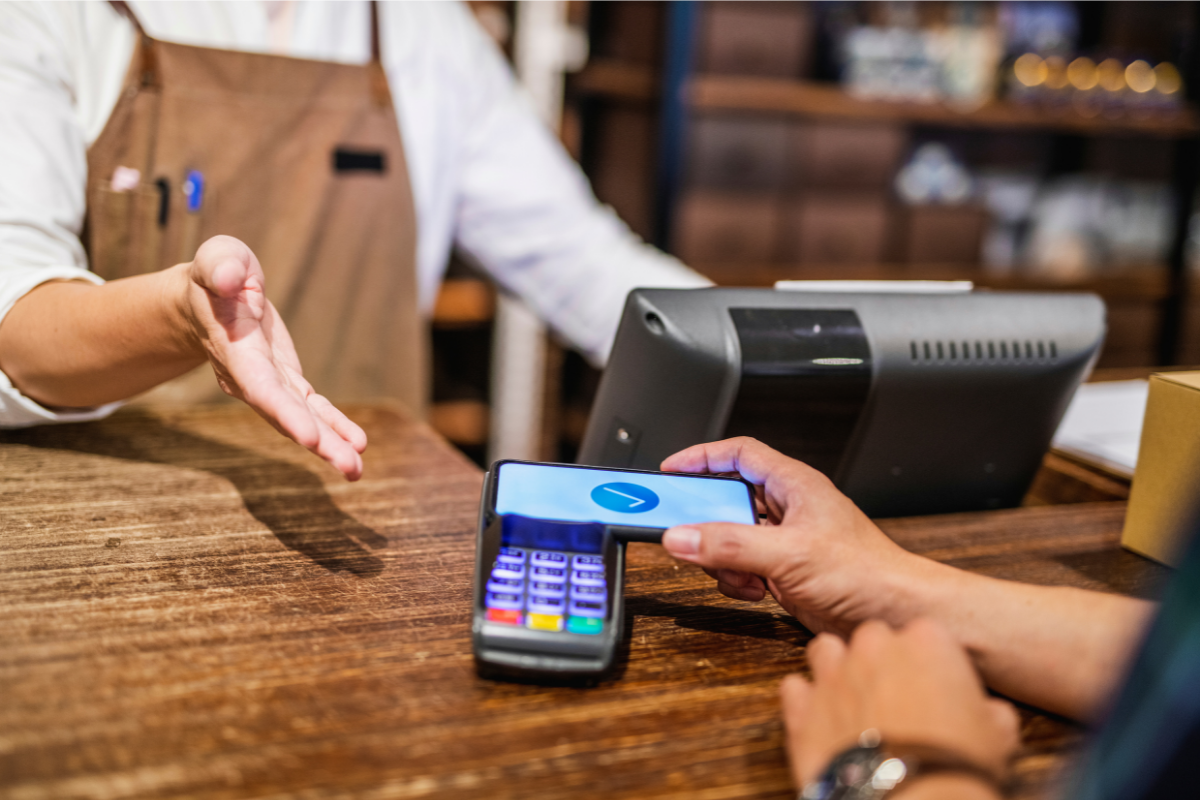
by Brendon Degner | Jun 3, 2022 | Merchant Services
In the past, Colorado was one of only a handful of states that banned surcharges on credit card transactions. In 2021, Governor Jared Polis lifted this ban and signed a new law which permits surcharges and details how they should be implemented. The law officially takes effect July 1 of this year. Knowing what to expect will help both business owners and customers adapt more smoothly.
What is the Purpose of a Credit Card Surcharge?
Accepting credit cards costs business owners money. In addition to paying a merchant services provider, there are numerous fees tacked on for things like security compliance, charge backs, and high risk services.
Adding a surcharge to each credit card purchase helps to offset costs for the business owner and allows them to keep accepting cards as a convenient form of payment.
What are the Colorado Guidelines for Surcharging?
Most states do not have regulations regarding surcharging, so it is considered permissible merely by default. Colorado is unique in that it has a specific law regarding the matter, along with a set of guidelines for its implementation:
Charges are Capped
Surcharges on credit cards will be capped at either 2% of the overall sale amount, or at the amount paid to the merchant services provider. Business owners may choose which method they want to use.
Any Additional Amount is Considered a Surcharge
In other states, card brand rules apply for whether or not something constitutes a surcharge. Under Colorado’s law, any additional amount applied to a credit card transaction is considered a surcharge. It does not distinguish between various fees, such as convenience or service fees. All count as a surcharge and are subject to the same rules and regulations.
Only Credit Cards Can Carry a Surcharge
Under Colorado’s new law, business owners may add a surcharge to credit cards only. Surcharges may not be added to transactions using debit cards, checks, gift cards, or cash. This is somewhat stricter than other states, where debit cards may still be subject to convenience and service fees.
Full Disclosure of Surcharging is Required
The Colorado law will mandate all business owners to inform customers about surcharges. This is to be stated using wording provided in the constitution. Merchants must also include the surcharge as a line item on receipts.
Does it Hurt a Business to Enact a Surcharge?
Many businesses may worry about customer backlash if they start surcharging credit cards. This is a valid concern, especially for your established patrons. No one likes having to pay more, after all, and it may seem unfair to customers who are not aware of the fees associated with accepting credit cards.
If you have concerns about a surcharge, consider a cash discount program. This is another way that businesses recoup losses from payment processing fees. It involves an overall price hike of around 4 percent, and anyone paying with cash is then given a 4 percent discount. This can have a less punitive feel than a surcharge. No one is charged more for using a credit card, they are simply ineligible for a discount.
Discounts are typically capped at 5%. The discount must be posted via clear signage and available to all customers paying with cash or check.
Reduce Your Payment Processing Fees
Unfortunately, fees are a necessary part of being able to accept credit card payments. However, many business owners do not realize that they may be overpaying for certain fees. A merchant services broker is a payment processing specialist that can help you look for ways to reduce or even eliminate certain fees. Contact Summit Payments to find out how you can start saving today.

by Brendon Degner | May 24, 2022 | Merchant Services, small business
E-commerce describes the buying and selling of goods over the internet. It is an extremely common form of business, with a majority of retailers offering some means of purchasing items directly from a website.
Many payments accepted by e-commerce sites are categorized as “card not present” transactions. This means that a physical card is not needed in order to pay. CNP transactions may also occur over the phone or through the mail.
CNP transactions on e-commerce sites typically involve the buyer filling out a series of fields, including card number, expiration date, and zip code. You are expected to provide additional supporting details, such as a billing address and shipping address. Other than this self-supplied information, however, there is no other means of verifying that the shopper is an authorized user of the card.
As you might expect, CNP transactions are at an increased risk of fraud versus card present ones. Payments involving the presence of a physical card, such as those at a brick and mortar establishment, have additional security measures to prevent unauthorized use. A debit card, for example, requires a pin; or a credit card might be matched with a photo ID.
When a fraudulent transaction occurs, the responsibility ultimately falls on the business owner. You will need to return the payment, accept the cost of lost merchandise, and may have a chargeback fee incurred by your payment processor.
To avoid such situations, you will want to be aware of warning signs to look for. There are a few common indications of potential fraud, and being able to spot them will spare you a lot of stress and help you avoid bogus sales and chargeback fees.
Signs of E-Commerce Fraud to Watch Out For
- Multiple orders of the same item
Fraudsters will target high ticket items and buy as many of that item as they can before the stolen card is maxed out. They can then resell the item for actual cash.
- Multiple orders to the same address paid for with different cards
Individuals using stolen credit card information will alternate between cards to avoid suspicion. If you are sending multiple shipments to the same home that have been paid for with several different card numbers, take a closer look.
- Large orders with overnight shipping selected
Credit card thieves want to complete their transactions to go through as quickly as possible to avoid detection. They will often make extremely large purchases and pay for expedited or overnight shipping in the hopes they will have the item before the cardholder even notices a fraudulent charge.
- Different shipping and billing addresses
This is not necessarily a cause for concern when it happens once in a while. But if you notice that the same shipping address has a consistently different billing address, it is a red flag.
- Declined transactions
Repeatedly declined transactions are a big sign of fraud. A credit card thief does not know precisely how much is on a card, and he or she may attempt multiple times with different cards that are also declined.
In that same vein, be aware of “card testing.” Scammers will attempt one or two small purchases with a card to see if it works, then make a much larger purchase.
Other Types of E-Commerce Fraud
E-commerce fraud does not always involve a stolen credit card number. Another type of fraud that is on the rise is something known as “return fraud.” This might involve a legitimate purchase but with the malicious intent of returning the item for financial gain. Some examples of return fraud include:
Switch Fraud-a buyer purchases a working item and returns an identical, but damaged, item.
Receipt Fraud-using stolen or forged receipts to return an item for profit. This may also involve purchasing goods on sale or from a different store and returning them to another store where they cost more.
Inventory depletion-buying out a seller’s inventory and re-selling the goods as your own for a higher price. Unsold merchandise is then returned to the original vendor.
How to Avoid E-Commerce Fraud
The first step in avoiding credit card fraud on your e-commerce site is making sure your payment processing system is secure. A qualified merchant services broker will inform you of additional cybersecurity risks and help you find ways of protecting your business from attacks. If you are an e-commerce site and need assistance updating and improving your security, contact Summit Payments to get started.

by Brendon Degner | May 16, 2022 | Merchant Services, small business
The ability to accept electronic payments, especially credit and debit cards, is essential for most contemporary businesses. These payments are convenient and secure, and allow both the company and customer to keep instant track of financing through online maintenance. They also cost the business owner. While they are almost always worth it, many businesses may wonder if they are paying too much for merchant services.
Merchant services provide the means to transmit financial data from the customer’s bank to merchant bank; they may also provide the necessary point of sale equipment. They charge various fees in exchange for these services.
The fees assessed by merchant service providers can vary widely from business to business, even amongst direct competitors. It is a good idea to review your statements to determine whether or not you are being overcharged. You can make a fairly quick assessment by asking yourself a few questions.
How to Know If Your Credit Card Fees Are Too High
1. Were You Signed Under an Introductory Rate?
Low introductory rates for many merchant services providers can be quite attractive. You can try a merchant services provider at a low rate for a certain period of time, after which you will be locked into a contract at a much higher rate. You might be told you can cancel any time before the contract date kicks in. So what is the risk?
The trouble is that most business owners are busy. While these offers may be genuine, the model is counting on individuals to forget to cancel their service before the contract kicks in. It is not dissimilar from certain internet service providers or online streaming services offering you a “free trial.”
If you were initially signed to a low introductory rate offer and continued your plan through that provider, you will want to review your statement with a licensed broker to ensure your fees are competitive for your type of business.
2. Are You PCI Compliant?
The Payment Card Industry (PCI) requires that businesses using merchant services remain compliant with certain standards of security. If a business is found non-compliant, they are charged a monthly fee until compliance is achieved.
Your credit card processor should work with you to help you become PCI compliant to eliminate these fees. If months have gone by and you have received no assistance in this matter, it is time to look for a new provider.
3. Do You Own Your Payment Terminal?
Many merchant services providers offer the option to lease a payment terminal. Payment terminals are electronic devices that allow a customer to swipe, insert, or tap a credit card and enter secure information, like a PIN.
Depending on your business needs, you may wind up spending thousands of dollars just on your terminals. It can, therefore, be tempting to lease your devices to save on a monthly basis.
Keep in mind, however, that you will be paying interest rates on rented devices. The final amount you pay will be significantly higher than if you’d bought your terminals outright. If you can afford it, pay up front for your terminal devices.
4. Do You Qualify for Lower Rates?
If you are generally pleased with your merchant services provider but are unsure if your fees are competitive, ask what you can do to qualify for a lower rate for certain types of transactions. Card-Not-Present transactions, for example, are often subject to a higher processing fee due to increased risk of fraud. Providing additional details for each of these kinds of payments, such as customer address, is often enough to qualify for a reduced rate.
Get Help Reviewing Merchant Services Rates
As part of its services, Summit Payments will perform a thorough review of your merchant services statements. We will look for any discrepancies, compare competitor rates, and look for common instances where businesses are overcharged. We will also advise you on steps to becoming PCI compliant and enhancing overall cybersecurity. Call our office to schedule your consultation and start saving today.

by Brendon Degner | May 11, 2022 | Merchant Services
The medical industry has traditionally relied on paper billing for its services, and many providers report it can take a month or longer to be paid. The ability to accept credit cards is crucial in streamlining the process and has been shown to increase both office and patient satisfaction.
Payment processing within the healthcare industry comes with a unique set of challenges and considerations. Privacy is a concern for any business, but medical providers also have a legal obligation to protect patient health information. For this reason, security is often a top concern for healthcare professionals that are hesitant to accept electronic payments.
Why Healthcare Providers Need Merchant Services
The ability to accept debit and credit card payments is critical for most businesses, especially in the wake of COVID, when remote and online transactions became much more commonplace. But merchant services in healthcare is especially important for several reasons:
1. Medical Providers are Paid Differently
The healthcare industry processes payments much differently from, say, a retailer. While the service is generally provided in-person, the majority of payments for those services are done online, by mail, or over the phone. This is because insurance is billed first, and it can take some time for a claim to process. Once the claim is processed, any amount not covered is then billed to the patient.
2. Patients Are Paying Out of Pocket More Often
The average patient deductible has increased by more than 65 percent in the last ten years. This means that most patients will be paying more out of pocket before their insurance even begins to cover certain services. More payments is a good thing for a business, unless you are bogged down with paper statements and checks that need to be deposited.
3. Merchant Services is Faster and More Convenient
As we discussed, it can take time for a medical claim to process through insurance. Weeks may have gone by already. Without the ability to accept a credit card, a patient or insurance company must then mail a paper check, which will take additional time. Then you must deposit the check which, depending on its size, can take several more business days to clear.
Offering patients a means to pay via credit or debit card is far more convenient than mailing in a check, and the payment will process instantly. Patients can also budget more effectively, since the payment will be withdrawn much more quickly from their account.
4. Merchant Services is Secure
A good merchant services company with experience in the healthcare field will not only keep your patient’s financial data secure, it will also help you stay up to date with industry trends regarding cyberattacks and fraud.
Many providers wonder if patient health information will be compromised in accepting electronic payments. While this is a valid concern, your merchant services provider will not require any details other than those related to the payment itself (name, address, card number, etc.). No information regarding the actual medical service or condition will be shared with the payment processor.
Cost of Healthcare Merchant Services
Because healthcare is considered a high risk industry for merchant service providers, the fees associated with accepting these payments is often higher than with other businesses. However, this additional cost is typically mitigated by the fact that providers are paid on time and with greater efficiency.
That being said, not all merchant services providers are created equal. There are instances when a payment processor may take advantage of the fact that doctors earn more on average and are too pressed for time to evaluate unnecessary fees.
If you are looking into accepting electronic payments as a healthcare provider, you will want to consult with an experienced merchant services broker. A broker works with many different merchant services providers; he or she will be able to find the best match for your business while negotiating fees and ensuring security compliance.
At Summit Payments, we are well-versed in the medical industry and the nuances related to payment processing in this field. Contact our office to discuss the next steps for your medical office.

by Brendon Degner | May 2, 2022 | Merchant Services, resources
The world of finance is complicated, and it is rare that things proceed exactly according to plan. One hiccup you may encounter as a business owner is having your merchant services application denied. This may be due to one or several reasons, but the most common include the following:
1. You Have Bad Credit
Even if your company is brand new and has yet to establish a credit history, banks and credit card processing providers will look at your personal credit and that of any other companies in which you have ownership. If your credit does not meet minimum requirements, your merchant services account application may be denied.
Solution: if you have a low credit score, you might want to look into finding a business partner with a better credit history who can sign the merchant agreement. It is also a good idea to build up a good cash savings to demonstrate to the bank that you are a safe investment.
2. Your Business Is Considered “High Risk”
There are several industries that are more susceptible to fraud and chargebacks. These industries are categorized as “high risk” and include the following:
- Tobacco sales
- Gambling
- Firearms/ammunition
- Financial services
- Travel
- Hospitality
- Medical and legal services
Many merchant account providers are wary of working with high risk businesses and will deny an application simply because you fall under this category.
Solution: Just because you have been denied by one merchant services provider does not mean you will be rejected by another. Once you have identified your business as high-risk, look for a provider who is willing to work with these types of businesses.
Many merchant service providers will specify on their website whether or not they deal with high-risk accounts. If you can’t find it on their site, call ahead before you begin the application process.
3. You Have Had a Previous Merchant Account Terminated
If you have left a previous merchant account in bad standing and it was ultimately terminated, you may be on a list called “MATCH.” This stands for Mastercard Alert to Control High Risk Merchants.”
The MATCH, also known as Terminated Merchant File (TMF), alerts account providers to any applicants who have had an account terminated in the past. This could be due to several reasons, namely unpaid bills, fraud, or too many chargebacks.
Solution: This can be a tricky issue, but it is not impossible to have your business removed from the MATCH/TMF list. You will need to get in touch with the bank that put you on the list in the first place. If you are not aware of why you were listed, inquire as to the specific reasons and work to address them. For example, you will want to pay any outstanding invoices.
Once you have mitigated any outstanding issues, request that the bank remove you from the list.
4. You Have Personal or Business Tax Liens
Tax liens are imposed when an individual or business is delinquent in paying taxes. This has a similar effect on your application as poor credit history. Merchant account providers will look at your tax history during the underwriting process and view any liens as a red flag.
Solution: Address any tax issues prior to submitting an application for merchant services. Work with a professional accountant to ensure your taxes and general financial history are in excellent standing.
5. Your Business Volume Is Inconsistent
Different industries have “standards” when it comes to processing volumes. When you apply, you will give the provider an estimate of your projected sales volume. The bank will compare this estimate with the average amount usually processed by your type of business. Inconsistencies between your sales volume and the average are likely to cause concern.
Solution: Don’t overestimate your sales volume. Be transparent and give realistic numbers. If you project that you will be processing a higher amount than the industry standard, provide documentation that supports your calculations.
What To Do If My Merchant Account Was Denied?
Being denied for merchant services can be a setback, but it does not mean you cannot find another provider willing to work with you. If your account was denied and you are unsure why, hiring a merchant services broker is a great place to start. A broker will be well aware of what merchant providers consider “red flags” and help you to address any issues. He or she will also know which companies work with high-risk industries.
If you need merchant services but you are unsure where to start or your application has been denied, contact Brendon Wegner at Summit Payments. He can help you find the processing provider best suited to your business and assist you in making the application process as smooth as possible.

by Brendon Degner | Apr 26, 2022 | covid-19, Merchant Services, small business
The COVID-19 pandemic has greatly impacted the way businesses operate, and payment processing is no exception. In addition to transitioning goods and services online and accepting remote payments, contactless payments have become essential in allowing in-person business to resume.
What Are Contactless Payments?
Although remote transactions, such as those accepted over the phone or online, might technically be contact-free, they are not the same as contactless payments. Contactless payments occur in-person and require a physical means of payment, such as a card, smartphone or wristband.
Contactless payments are processed the same as a credit or debit card, but a physical card is not necessarily needed. While tap-to-pay credit cards do fall under “contactless payments,” it is becoming more commonplace to instead have digital versions of the cards on smart devices.
Users can upload card information on a mobile device or wristband, for example, and simply tap the device on a processor when it comes time to pay. For this reason, contactless payments are also referred to as “cardless” and “tap-and-go” transactions.
Examples of card-free contactless payments include:
- Digital “wallets,” where a debit or credit card has been uploaded to a smart device
- Apple Pay, which is a digital credit card that has be pre-loaded with funds from a bank account and designed for iPhone
- Google Pay, which is similar to Apple Pay but for Android devices
- Samsung Pay, an alternative to Apple and Google Pay
How Do Contactless Payments Work?
Contactless payment is based on something called radio frequency identification (RFID). RFID is effectively a form of wireless communication that uses radio waves to transmit signals and receive data.
RFID technology has been refined for contactless payments in the form of near field communication (NFC). NFC limits the range of data transmission to within a few inches of a reader. This is a security measure that ensures a payment is almost always deliberate, since the device must come within such close proximity in order to process the data.
Why Are NFC Payments Important?
At the height of the pandemic, contactless payments allowed for the re-opening of businesses while reducing the spread of the virus. Customers and employees could feel safer knowing they would not have to physically touch to complete a payment.
Even as COVID restrictions are lifted and we return to more traditional ways of going about our daily activities, contactless payments remain an important service to offer customers. Not only are they convenient, they incorporate additional security features:
Passcode and Biometric Protected
You can set a password, fingerprint, or facial recognition requirement in order to access the device where your card info is stored.
No PIN Required
You do not need to enter a PIN. While the PIN is, itself, a security measure for card-present transactions, you always run the risk of someone seeing and potentially stealing this information.
Transaction Limits
In many cases, you can set limits for spending with contactless payment. Should a data breach occur, anyone with your card information will be limited to taking the amount you have set.
Contactless Payments for Small Business
Even as the pandemic dies down in parts of the world, contactless payments will continue to be an important service for customer convenience and security. If your small business does not offer a way to accept these types of transactions, consider speaking with a merchant services broker.
Summit Payments can help you locate a merchant services provider that will allow you to accept both card and contactless payments at your point of sale. We can also help you reduce or even eliminate certain fees associated with your provider. Contact our office today to schedule a consultation.







Recent Comments